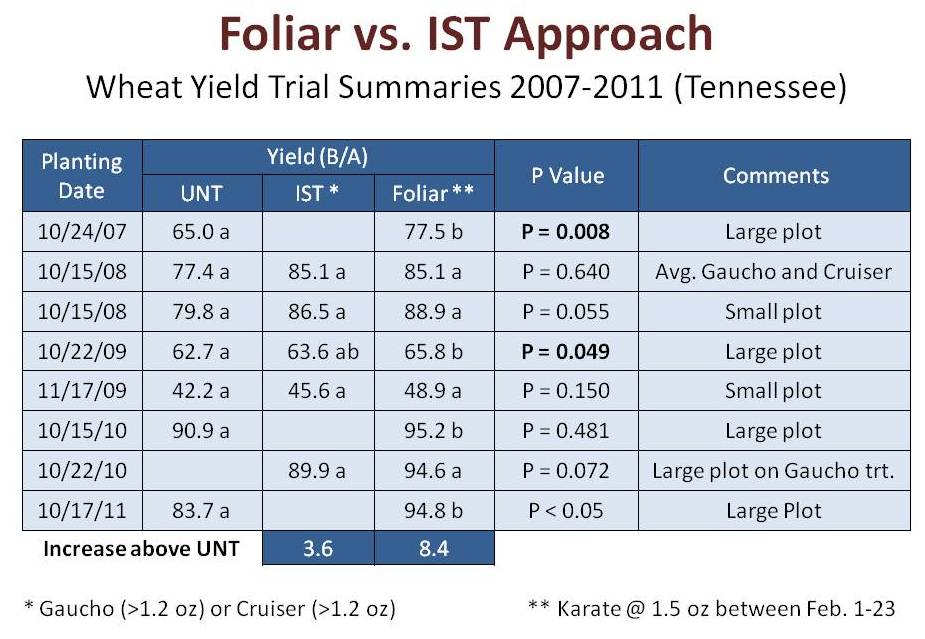A word of caution about jumping the gun on planting wheat. There are a lot of negatives and few positives of planting wheat prior to October in Tennessee.
- Wheat planted before the fly-free date, approximately October 15th for Tennessee, will be at greater risk to Hessian flies. Wheat planted too early can also serve as a nursery for the fall generation. The subsequent spring generation can seriously damage any nearby late-planted fields.
- Fall armyworms can do a number on September planted wheat. Given the heavy infestations that have been occurring in pastures, there is a high likelihood that armyworms will be around until we get a frost.
- Aphid populations during the fall are typically higher in early planted wheat. Barley yellow dwarf virus (BYDV), which is transmitted by aphids, can reduce yields (see below). You may be able to use insecticide seed treatment or foliar insecticides to reduce fall transmission of the virus. But I see mostly risk without reward by planting too early.
Seed Treatments vs. Foliar Insecticides for Aphid Control
Over the last several years, we’ve studied how seed treatment or foliar insecticides impact wheat yields. Presumably, most of the effects we have seen are the result of aphid control and a reduction in BYDV. We routinely see both in our tests. The table below summarizes the results of multiple tests done since 2007. Here are some of my observations.
- Insecticide seed treatments increased yield on average about 3-4 bushels per acre. This is consistent with previous data generated in Tennessee.
- It is uncommon to find many aphids in wheat planted in mid October. This observation typically holds true holds until late February or March when the wheat and aphid populations begin to grow.
- A late winter (February) foliar application of insecticide has increased yields in my tests by an average of 8.4 bushels per acre. This is for wheat not having an insecticide seed treatment.
My experience, based on less data, is that using both an insecticide seed treatment and a late winter foliar insecticide application is not necessary IF you plant in mid October or later. In other words, the benefits of the seed treatment and the foliar application are probably not additive.
A seed treatment or foliar application of insecticide in the fall and spring may be necessary for wheat that is planted too early … or if aphid populations get an unusually early start. Scouting can help determine if a fall application of insecticide is needed for the prevention of BYDV.


